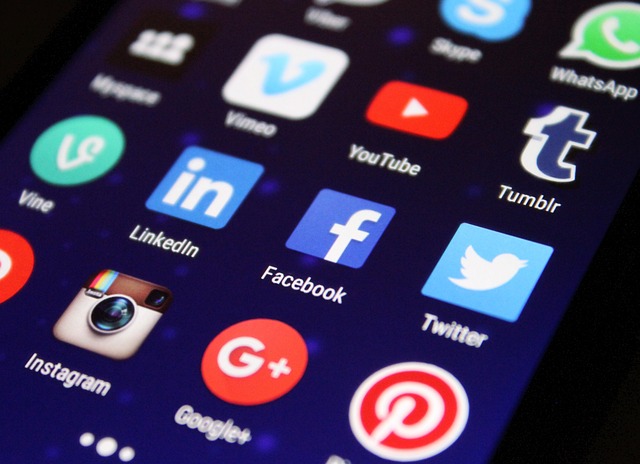In the era of instant messaging, likes, and viral feeds, the question of whether we are truly connected has never been more pressing. While the world now operates in a web of digital interactions, many feel an increasing sense of loneliness. The paradox emerges: a social network that promises proximity simultaneously breeds a quiet isolation. By examining how platforms shape our daily habits, we can begin to understand the subtle ways that online engagement may distance us from the very relationships it purports to strengthen.
Defining the Social Network and Isolation Dilemma
At its core, a social network is a system of relationships that allows individuals to exchange information and support. Isolation, on the other hand, refers to a state of physical or emotional separation from others. The tension between these concepts surfaces when platforms that facilitate connection also encourage passive consumption. When scrolling becomes a substitute for conversation, the network may become an echo chamber, reinforcing feelings of detachment rather than fostering genuine dialogue.
Patterns of Online Interaction
Most users spend the majority of their online time in three primary modes: content creation, content consumption, and minimal interaction. The first two activities tend to be solitary—crafting a post or reading a feed—while meaningful engagement remains the exception. This pattern of engagement fuels a cycle where the illusion of constant connection masks an underlying void. The more users focus on self-presentation, the less they invest in reciprocal exchanges, thereby widening the gap between digital presence and emotional closeness.
The Psychological Impact of Social Media
Research consistently links heavy social media use with increased anxiety, depression, and a lower sense of belonging. Studies show that users who frequently compare themselves to curated online personas often experience negative self-evaluation. This comparison effect, rooted in the need for social validation, can exacerbate isolation. The platforms’ design—emphasizing metrics like likes and shares—creates a pressure cooker environment where users may feel disconnected from authentic experiences.
Reward Systems and Habit Formation
One of the most compelling factors contributing to isolation is the reward architecture of social networks. Variable rewards—such as random notifications or unexpected likes—activate dopamine pathways in the brain, encouraging repeated engagement. Over time, these rewards can foster compulsive scrolling, leaving users with a diminished capacity for sustained, face‑to‑face interaction. The constant urge to check for new content hijacks moments that could otherwise nurture deeper human bonds.
Social Media’s Role in Shaping Identity
Identity formation in the digital age occurs within the boundaries of algorithmically curated feeds. Users often adopt personas that align with their perceived audience, rather than authentic selves. This curated identity can alienate others who might recognize only the performance. When people are unable to share their true emotions online, the resulting surface-level interactions fail to bridge the emotional distance that exists in real life, thereby deepening isolation.
Community Versus Crowd
Social networks often host both niche communities and massive crowds. While the former may provide a sense of belonging, the latter can feel overwhelming. In large, anonymous groups, meaningful connections are scarce; messages blend into a cacophony of noise. Conversely, small, focused groups may still suffer from the superficiality of online interactions, where members rarely engage beyond initial greetings or occasional comments.
Offline Consequences of Online Connectivity
As individuals invest more time online, they sometimes reduce participation in physical gatherings. This shift manifests in decreased household conversations, missed social events, and a decline in community involvement. The loss of tactile experiences—shared meals, group walks, or spontaneous conversations—transforms the abstract feeling of “being connected” into a hollow, digital echo. The very tools designed to keep us close can inadvertently create barriers that prevent us from experiencing true companionship.
Case Study: Family Dynamics in a Digital Age
Consider families where parents frequently engage with social media during dinner. The act of checking a phone can signal disinterest, prompting children to withdraw. Even the smallest gestures of distraction—glancing at a notification—send a message that shared moments are less valuable than online interactions. Over time, this habitual detachment can erode familial bonds, demonstrating how social network and isolation interplay on a personal level.
Strategies for Rebalancing Connection
Mitigating isolation begins with awareness. Setting boundaries—such as designated phone‑free times—allows space for genuine conversation. Additionally, cultivating “offline communities”—book clubs, sports leagues, volunteer groups—offers real-world interactions that reinforce trust and mutual understanding. By prioritizing depth over breadth, individuals can nurture relationships that transcend the superficiality often inherent in digital exchanges.
Mindful Engagement Practices
- Allocate specific periods for checking updates, avoiding random scrolling.
- Curate your feed to highlight content that encourages dialogue rather than passive consumption.
- Respond thoughtfully to posts, shifting from “likes” to substantive comments.
- Use social media to coordinate real‑world meetings, turning virtual prompts into physical events.
The Future of Social Connection
Emerging technologies promise new ways to bridge the gap between online presence and offline intimacy. Virtual reality, for instance, can simulate co‑presence, allowing users to share spaces even when geographically apart. However, such innovations must be designed with empathy, prioritizing authentic interaction over mere novelty. The challenge lies in leveraging digital tools to foster meaningful bonds while guarding against the inadvertent reinforcement of isolation.
Final Thoughts
While social network platforms have transformed how we communicate, they also highlight the delicate balance between connection and isolation. By consciously steering our digital habits toward intentional, deep interactions, we can reclaim the sense of belonging that technology promises. Ultimately, the measure of true connectivity will not be the number of online friends, but the quality of relationships that endure beyond the screen.




